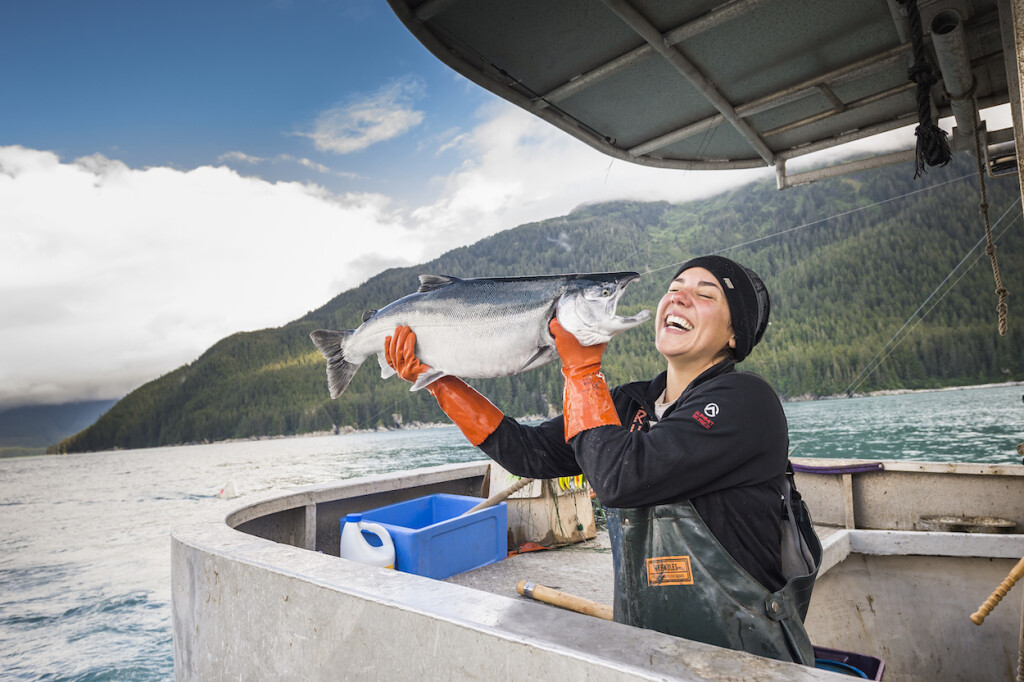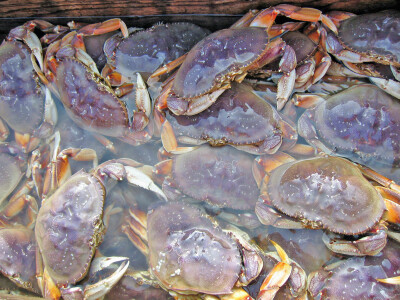Alaska’s 2021 salmon fishery produced the third highest catch, fish poundage and value on record, dating back to 1975.
According to preliminary harvests and values by region from the Alaska Department of Fish and Game, the catch of nearly 234 million salmon had a dockside value of almost $644 million, and weighed in at 858.5 million pounds.
That compares to 117 million salmon harvested in 2020 valued at just over $295 million and a combined weight of 517.5 million pounds.
All Alaska regions saw salmon earnings double or nearly triple from last year, except for the Kuskokwim, Yukon and Kotzebue, where values decreased.
By Region
Bristol Bay’s record sockeye run boosted the region’s total salmon catch to over 42.2 million fish valued at nearly $249 million to fishermen. That’s $108 million more compared to the 2020 catch of more than 40 million fish.
For Southeast, a catch of over 58 million salmon was four times higher than last year, and the value to fishermen topped $132 million compared to just $50 million.
The Prince William Sound salmon catch of 70.5 million had a dockside value of almost $122 million — a nearly $72 million increase over last year’s take of 25.5 million fish.
Cook Inlet’s salmon catch crept up slightly to just under 4 million with a value to fishermen of nearly $19 million. That compares to 3.6 million fish and $10 million last year.
At Kodiak, a catch of just over 31 million salmon topped $51 million, compared to 24 million fish and $26.6 million last year.
Alaska Peninsula fishermen pocketed $67.4 million on a catch of over 26.7 million salmon. That’s a nearly $51 million gain over the 2020 take of 8.7 million salmon.
Chignik fishermen had no salmon harvest in 2020 but took home nearly $2.5 million on a catch of over 1.5 million fish this year.
At Norton Sound, a first ever fishery netted 290,000 pinks and boosted the overall catch to 303,983 fish valued at $444,771. That compares to 50,679 salmon and $290,302 in 2020.
On the downside, Kuskokwim fishermen saw salmon catches drop to just over 137,000 fish valued at $493,459, compared to 197,365 salmon and $596,270 last year.
At Kotzebue, a harvest of 96,499 salmon paid out at $332,083 compared to 149,820 fish valued at $542,306 last summer.
Yukon fishermen had no salmon harvest this year. Last year they caught 18,813 fish valued at $290,302.
By Species
Overall, sockeye catches of just over 57 million accounted for nearly 56 percent of the total salmon fishery value at over $361 million, and 24 percent of the statewide harvest.
The pink catch of nearly 161 million was worth nearly $179 million, 28 percent of the value and 69 percent of the statewide harvest.
Coho salmon comprised about 4 percent of the value at $23.9 million and 1 percent of the harvest at 2.7 million fish.
Chum salmon accounted for almost 10 percent of the value at $62.7 million and approximately 6 percent of the total harvest at 12.8 million fish.
The king salmon harvest topped 265,000 fish with a value to fishermen of just over $17 million.
Prices increased across the board with kings averaging $5.82 per pound, a $0.75 increase; sockeyes averaged $1.34 compared to $0.76; cohos at $1.45 compares to $1.17; pinks at $.37 was a $0.07 increase; and chums averaging $0.77 was a $0.34 increase over 2020.
The salmon values don’t reflect post-season adjustments or bonuses to fishermen. Final values of the 2021 salmon fishery will be determined in the spring, following final reports from processors, buyers and direct marketers.
In all, 6,362 permit holders made salmon landings in 2021, a drop from 6,496 in 2020.







